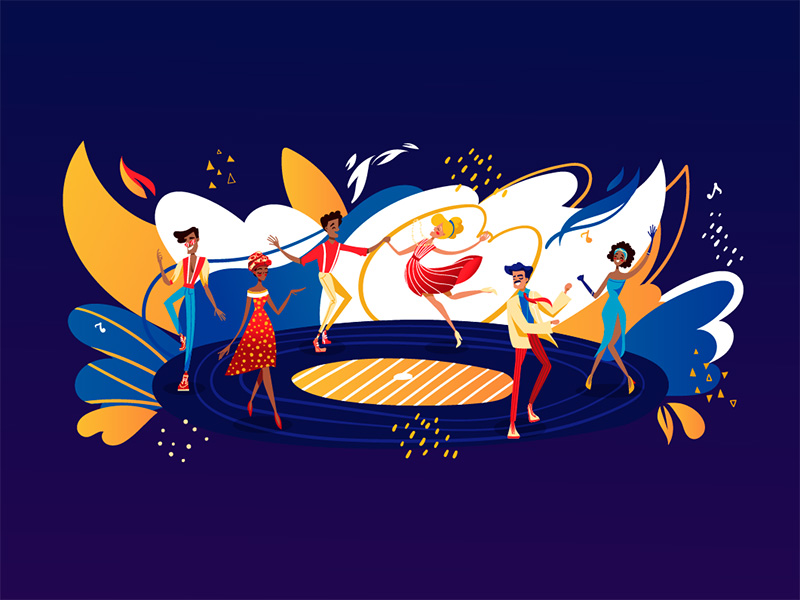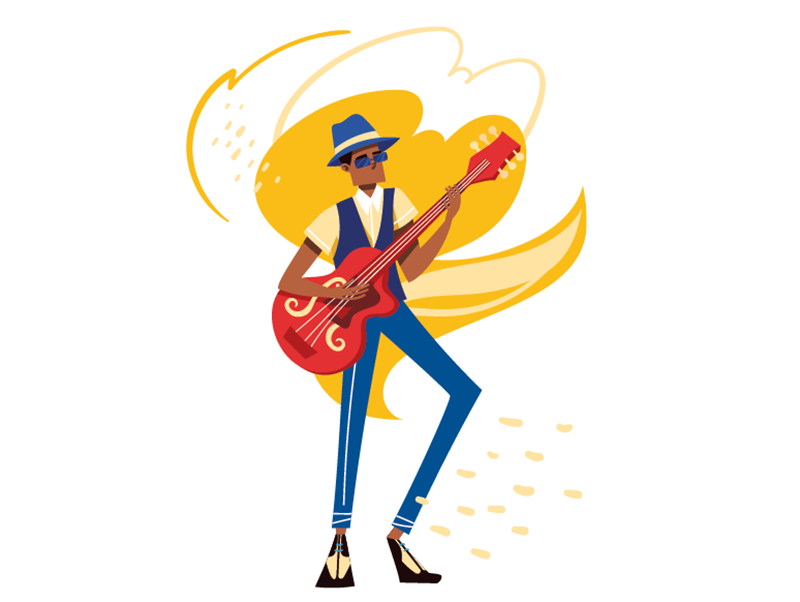By Hannes Gurzki and Joachim Junghanss
Prior to the coronavirus pandemic, few people would have expected the acceleration of digital technology and the new ways of working that we see today. While the term VUCA (volatility, uncertainty, complexity, and ambiguity) has been long used to describe such dramatic changes, we are now all experiencing it every day, every minute, and every second of our business and private lives. Positively, the disruption has been a catalyst for developments in a broad array of areas – in healthcare, certainly, but also in social responsibility, sustainability, and in new business ventures leveraging digital technology. This nevertheless poses challenges to organizations, teams, and individuals. Today’s leaders, especially, must operate in an environment that is substantially different from what they were used to.
While previous management models of command and control might have worked to some extent in predictable environments, they are not well suited to situations with high uncertainty and change. How do we deal with the unforeseen? How do we maintain our competitive advantage? How can we build on our capabilities while tapping into potential growth opportunities? Are our mental models of the world suited for this task, or is it time to challenge the model by bringing in new perspectives?
Jamming on metaphors: (Re)discovering jazz
Management analogies using music are nothing new. The orchestra model, for example, has been used to describe the leadership challenge for decades. The conductor takes charge, but must win the respect of the musicians to then orchestrate their best performance. The heart of this analogy: The leader can only be as strong as the team.
While we fully embrace the orchestra metaphor, there is one aspect it does not address well: uncertainty. The orchestra metaphor is based on a fixed organization (orchestra) grouped into defined sections (instruments) with pre-defined plans and roles (score) and hierarchical leadership with a concentration of power and expertise (conductor) to achieve a defined outcome (the performance). While there are surely cases where this metaphor is (still) the best and most useful description of corporate reality, we see increasingly that such organizational structures and hierarchies are challenged by new business paradigms, such as through the introduction of agile methodology. Instead of a set piece, the score evolves during the performance. Musicians might know better and adapt earlier than the conductor, whose center of power and expertise diminishes. Improvisation becomes inevitable. Let’s turn to an art form that embraces improvisation: jazz.
Within the jazz approach, the musicians engage in conversation with their fellow musicians to create a unique piece for just one moment. The performance is an act of creation. This metaphor recognizes important aspects of today’s agile approach to work, such as the creative process, the tools used to excel in the process, and the experience of creation as a learning opportunity. This requires a performer’s perspective. Pat Metheny, a renowned jazz guitarist, put it like this: “It is jazz’s very nature to change, to develop, and adapt to the circumstances of its environment.”
The classical-orchestra model will continue to be less representative of reality. For tomorrow’s leaders, what might emerge instead is a jazz band in which composer, conductor, and performer merge into a single role. This was the starting point for John Clarkson, then CEO of the Boston Consulting Group, when he wrote “Jazz vs. Symphony.” What kind of leaders do organizations need, asked Clarkson, to fulfill the creative function to succeed in the 21st century?
Learning from the jazz mindset
That does not mean that jazz has no rules or structure. Rather the opposite: Jazz has just enough structure as needed to allow for every individual to be creative. Or, as jazz pianist Dave Brubeck phrased it, “Jazz is about freedom within discipline.” Through our experience and work with musicians and executives on the art of their performance, we have identified eight factors that are crucial for establishing a jazz mindset and leading in a world of the unknown. Music is typically arranged in multiples of four – four beats per bar, four bars per line, four lines per song – and marked with an “I” on the beat. Saxophonist Charlie Parker even said, “I can play all I know in eight bars.” We provide you with eight bars in this article, over which you can play your leadership tune.

Intention: Grooving with purpose and passion
What drives us? All action starts by igniting the sources of motivation that fuel our drives to start the journey. This is also true for music. Core to the art is communication, the desire to convey a message with pure emotions and passion. As jazz musician Duke Ellington said, “There is no art without intention.” And the intention and message come from answering the “why.”
Jazz makes purpose audible to us, expressed in the groove and feel of the music. Jazz nurtures the sense of pulse, of driven and rhythmic intensity. Groove is one of the defining elements that make music sound like jazz. To count-off a piece – to define its tempo, pulse, and feel – is to set the common purpose. The purpose connects and aligns the musicians. It provides the drive and energy to explore the direction with others. As Duke Ellington’s trumpet player Bubber Miley said, “It don’t mean a thing, if it ain’t got that swing.”
Inspiration: Listening to weak signals
Where do we get new ideas from? Listening is a foundational part of jazz training and part of the lifelong, daily routine of jazz musicians. As a music tradition, jazz is transmitted more aurally than by writing. Jazz can be notated, yet notation often lacks important details such as groove, feel, or tone. These can be only learned by very detailed listening and imitation. Through listening, jazz musicians learn their musical language.
Listening leads to inspiration, to the generation of ideas. And it happens in the moment of performance. Jazz musicians use listening as a tool to create music. Take, for example, the listening between a soloist and a band accompanying the soloist. Soloists are constantly listening to their accompanying musicians and their variations and musical ideas, such as melodies, rhythms, motives, and harmonies. Accompanists, on the other hand, listen all the time to the ideas soloists bring up and react to these. This creates a feedback loop of listening, inspiration, and idea generation. Or as guitarist Jimi Hendrix phrased it, “Knowledge talks, wisdom listens.”
Ingenuity: Creating and discovering the unknown
How do you bring a new idea to life? Creativity flourishes when daring and novel ideas are appreciated. Jazz demands that musicians thoroughly master its shades and details. But, in the end, it honors a creative application of the elements learned. While some of the most influential musicians are celebrated as geniuses in creativity, ingenuity, and craftsmanship, these same stars widely accept that ingenuity can be learned, practiced, and achieved by almost anyone. As trumpet player Wayne Shorter said, “To hell with the rules. I’m going for the unknown.”
This does not mean that jazz does not have rules. But rather than limiting the performers, the rules are negotiated within the group to serve as just enough guidelines to allow the performers to freely explore their ideas. Ideas can only evolve if they meet receptive minds that make them their own and spread them further. Curiosity and compassion trump command and control in the creation of novel ideas. A core leadership task for leaders in a jazz band is thus to create the environment and space for ingenuity to flourish. This also requires providing guidance and support when musicians together dare to venture into new arenas. This can make the combination of all ideas much richer and intriguing than merely summing up the parts.
Individuality: Embracing diverse views and being human
What resources can we employ in the creative process? Art is strongly shaped by the individuality of artists. Jazz especially appreciates and honors individuality. It expresses a unique musical character, shining through melodic and rhythmic ideas, harmonic choices, the instrument, and behavior in a group performance. Certain jazz styles depend strongly on the musicians who established their characteristic musical elements from their own original choices and combinations. Jazz musicians often quote and refer to those musical frontrunners, even mockingly playing characteristic musical elements to signal to the other musicians the artist they are referring to.
While that individuality can foster a jazz musician’s career, a successful band uniquely combines individual musicians who achieve a distinct sound. In this sense, the network of a jazz musician is an important tool. Calling the right musicians – and bringing together a team that has enough common ground to fully appreciate its diversity – is more important for a successful performance than the program itself. By being themselves and meeting a supporting team appreciates different viewpoints, every musician can bring out what they are best at. Jazz pianist Thelonious Monk once said, “Everyone is a genius at being themselves.” It is this genius that can bring novel perspectives to the team and thereby advance the team and the individual. This means not only building on one’s strengths in the performance but also accepting one’s weaknesses, embracing them, and working on both.
Improvisation: Responding to changes in an agile way
How do we deal with the unexpected? Improvisation is a term strongly associated with jazz practice. Yet it is inherent in all music – Bach, Mozart, and Beethoven were also known to be fabulous improvisers. So, maybe it is better to say that the improvisation tradition is still practiced in jazz to this day.
If jazz is improvisation, then becoming a jazz musician means learning how to improvise. It can be best compared to using language. To become skilled at this craft, musicians must diligently study “provised” musical materials, such as grammar rules, vocabulary, and the practice of communication. This builds a (literal) repertoire of “language,” which is then exercised during the performance. This practice allows jazz musicians to listen, detect, and react instantly during the performance. Because of this disciplined learning and practice, the musician can govern the instrument with both precision and virtuosity.
Imagination: Envisioning future possibilities
How do we create the future together? The imperative and root of jazz is change. Innovation is built into jazz practice. Jazz musicians are expected to rearrange and remodel jazz standards when performing them and to search for and fuse new elements into their music. Numerous bands, even of famous musicians, start as open-ended experiments – many are called “projects” for this very reason. This requires stepping on the stage with a beginner’s mind and embracing the insecurity, self-doubts, and insecurities as sources of energy in the journey of imagining and creating a future for the band and the audience. Creating a safe environment allows for open communication and risk-taking that sparks novel ideas to take place. The spirit can be summed up by saxophonist Charlie Parker: “Don’t be afraid, just play the music.”
Some of the world’s most famous jazz musicians went through this transformation process several times, sometimes even with the consequences of needing to disappoint their record labels and fans, just in order to find new audiences. As trumpeter Miles Davis said, “Don’t play what’s there, play what’s not there.” Creating novel combinations of sounds or providing fresh perspectives on the standard tunes drives musical innovation. And ultimately this changes the game for all jazz musicians collectively. As Thelonious Monk remarked, “A note can be as small as a pin or as big as the world, it depends on your imagination.”
Interplay: Co-creating in a safe environment
How do we unleash the full potential of the team? Jazz lives from the interaction. During a performance, this interaction – called “interplay” – can be seen as a musical conversation between band members, and also with the audience. The band members listen to each other with utmost concentration and attention, and either react to their input or blend in their own ideas. The increased flow and improved sound are widely perceptible to the audience.
Jazz musicians can often be overheard talking about the level of interplay during the intermissions: “In this tune, I really listened to your ideas” or “the chords you played during this set really inspired me” or “in the next set, please listen more to what I play.” It can go so far that some (highly experienced) musicians do not plan their concert performance at all. Instead, they walk on stage without a pre-set program. The soloist calls a piece by performing its melody and lets the other musicians pick it up (or not). A great interplay dares to try something new and empowers others to build on the idea. The instantaneous reaction to ideas is a “yes, and” instead of a “yes, but” or a straight “no.” Building on the ideas of each other also encourages the musicians to give their best and continuously raise the collective bar for all. Saxophonist John Coltrane thus said, “Invest yourself in everything you do. There’s fun in being serious.”
In this, the role of making mistakes during creative performance changes drastically. Part of the jazz process is to welcome and embrace mistakes for their potential. Mistakes hint at new ideas and ways to improve practice and are important indicators of what needs to be changed. Miles Davis put it like this: “It’s not the note you play that’s the wrong note – it’s the note you play afterward that makes it right or wrong.”
Intuition: Continuing to learn on the never-ending way to mastery
How do you continuously improve what you are doing? Jazz creates room for ideas to be realized immediately and often without using words. In practicing their art, jazz musicians do not only prepare for the moment of creation; they also work on their intuition to generate new ideas when they add value. As trumpeter Louis Armstrong famously said, “Never play a thing the same way twice.”

While jazz musicians often have a large repertoire of so-called licks and phrases to use as patterns and building blocks, the true art is to go beyond them in the moment of performance, listening to the others and your own inner ear. This creative confidence leaves what is known and practiced to enter the magical space where the head, heart, and hand connect. Often, to get to the next level of playing, musicians need to be ready to step on the stage with a beginner’s mind, embracing the insecurities and self-doubts as sources of energy in the performance and quest for new ideas. Only if the challenge is large enough and we dare to tackle it can we grow further to master it. Paradoxically, this sometimes requires “unlearning” and challenging core musical principles, such as harmonic structures or cadences, for the music to evolve. Dizzy Gillespie reflected: “It’s taken me all my life to learn what not to play.”
Co-creating the future of your organization
Looking at learnings from a performer’s perspective, one thing becomes clear: jazz is a mindset, an attitude. It is driven by passion and a higher purpose, is highly interactive, establishes safe and inspiring environments that allow for mistakes, and is used to operate in a highly uncertain and volatile environment. It endures setbacks, yet constantly reaches for distant goals.
How can you apply these same principles to yourself, your teams, and your organization to successfully navigate the future environment? Not all of the eight principles might be equally relevant for you. Nor are they meant to be an exhaustive or fully mutually exclusive list of all there is to be learned from the context of jazz music about leadership. They are meant to provide inspiration for you to take them and jam with them. This means reflecting on how they might be helpful to provide a fresh perspective to your everyday context, applying them where they make sense, and developing them further. We propose three steps for your leadership jam session.
Listen
Listening is part of jazz performance, and much more of its development originates in listening. Nurture and model a culture of listening as a value. In this, you establish a practice for listening for, dealing with, and building on the unexpected. Which ideas of the jazz elements resonate with you? Why? Which elements might be useful to further explore?
Play
The interplay in jazz starts in an instant and then takes its own route to unexpected results. When members are attuned to the groove – the underlying driving beat of your organization – they feel a sense of purpose, a place to be safe and to do what they are passionate about. Enable members to co-create, act, and react in a fast and playful way. It creates a sense of the flow of a performance and can create a workflow in your organization. Which elements might inspire you to try out new leadership practices? What might be a way to transfer the insights to your context? Which element might be the most daring to experiment with?
Learn
Jazz musicians try to redefine mistakes as chances or opportunities. In order for your own organization’s performance to succeed, allow, embrace, and welcome mistakes as a learning opportunity. Welcoming mistakes can allow members to tap into their intuitive potential of creation. In the jazz context, this is the most creative part of a performance. The same could count for your organization. What has worked well and might serve as an inspiration or a future jam session? What has not worked, and how might you approach your idea differently? What practices create value for you, your teams, and your organizations, and how can you make the most out of them in your daily jobs?
A future full of changes is about to come, and with it rapidly changing technologies, markets, organizations, and business models. Leaders have the possibility to shape the future they would like. While this is certainly not easy, and successes might also meet setbacks, it is the open mind and willingness to learn as an individual, team, or organization that can make the difference. As pianist Herbie Hancock said, “Life is not about finding our limitations, it’s about finding our infinity.”
And the future starts now. Any moment you step on the leadership stage to play a tune with your team and co-create a performance is the occasion to further push the boundaries of the possible. Or, as Miles Davis put it, “My future starts when I wake up every morning. Every day I find something creative to do with my life.”
Jazz has often been ahead of its time, convinced about its purpose, preparing for the unknown during the performance, highly collaborative, and open for mistakes. It is time to take a musician’s look at what to learn from it to shape the future. Jazz is not the solution to all of today’s leadership challenges. But we believe it is a useful metaphor to help leaders gain a new perspective on the old but increasingly important aspect of how we deal with uncertainty. Or to finish with a quote from Sonny Rollins: “Jazz never ends… it just continues.”
About the Authors

Hannes Gurzki is a program director at ESMT Berlin and passionate about topics of luxury, branding, marketing, sales, strategy, and creative leadership. He is passionate about exploring the symbiosis of arts and business. He studied business administration and intercultural management and completed his doctoral studies in luxury marketing at the Technical University of Braunschweig. In addition, he holds a diploma of the Associated Board of the Royal Schools of Music in saxophone performing. His research has been published in leading business media and academic journals.

Joachim Junghanss is the associate director at Conservatorium van Amsterdam and heads one of Europe’s largest and leading professional jazz programs, including pop, music production, and electronic music. He is passionate about the potential of music in a global society and has founded numerous social and innovation projects around this theme. An alumnus of the Boston Consulting Group, Joachim has a background as a professional jazz musician and as a classical pianist, holding an MA and DMA from Manhattan School of Music, New York. He premiered original pieces involving classical and jazz musicians at Weill Recital Hall, Carnegie Hall, in New York.


































